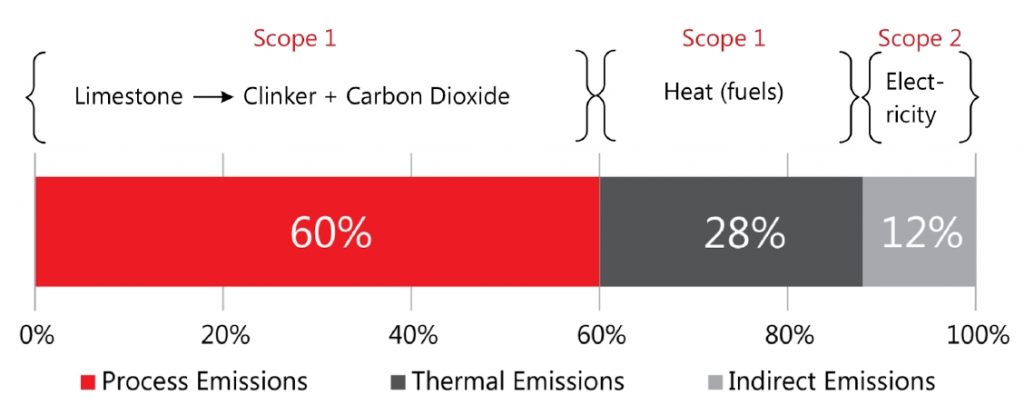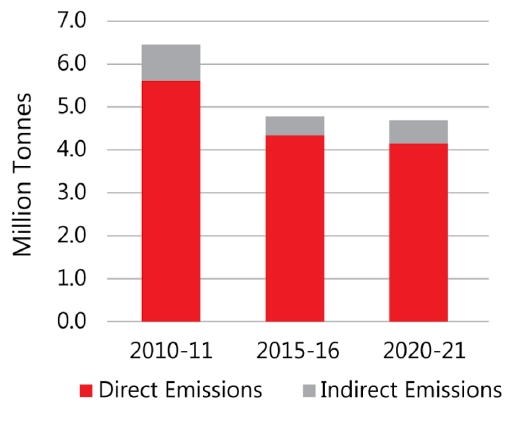Cement Industry & Emissions
Our industry acknowledges the critical importance of addressing climate-related impacts, including those associated with the manufacture and use of cementitious materials. This forms an important part of our social licence to operate and underpins the ongoing sustainability of our sector.
There are three main sources of carbon dioxide emissions associated with cement manufacturing: process emissions (Scope 1), thermal emissions (Scope 1) and indirect emissions (Scope 2). Process emissions result from the chemical reaction that occurs during the calcination (heating) of limestone to form clinker and carbon dioxide. Process emissions accounted for around 60 per cent of 2020-21 total emissions and are the main reason why cement manufacturing is often referred to as a harder-to-abate sector.
Thermal emissions accounted for around 28 per cent of total emissions and result from the use of fuels such as coal and gas to generate the high temperatures (1,400-1,500 degrees Celsius) required to form clinker. Indirect emissions associated with electrical energy usage accounted for around 12 per cent in 2020-21.

Total emissions from the integrated production of clinker and cement were 4.7 million tonnes CO in 2020-21. This represents a 5 per cent decrease over 2019-20 levels.
